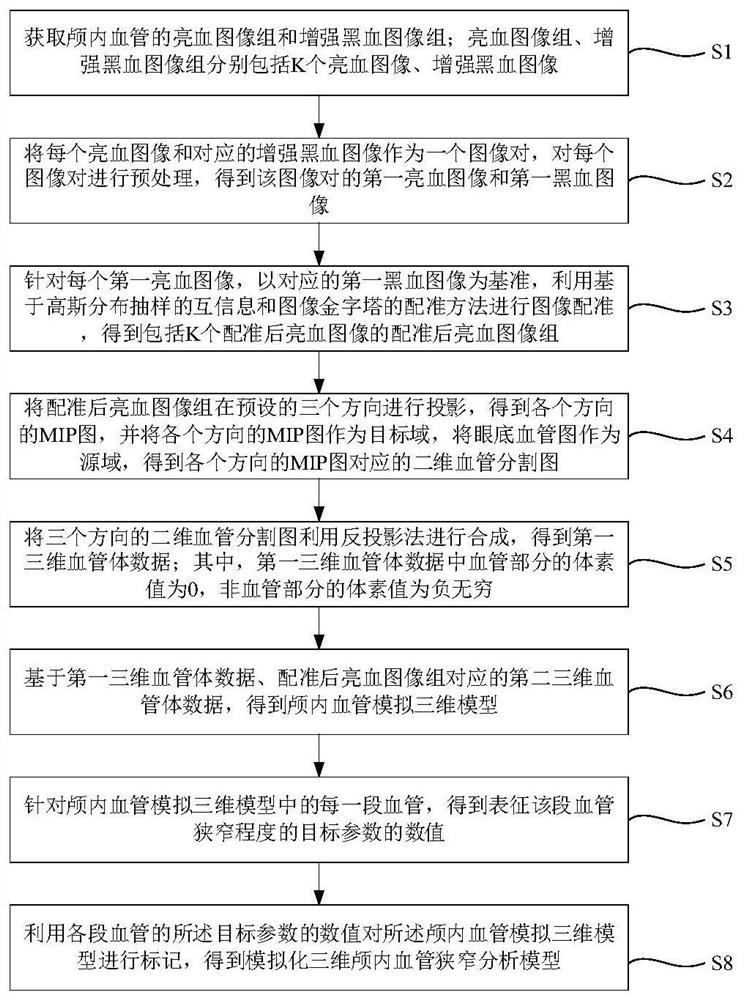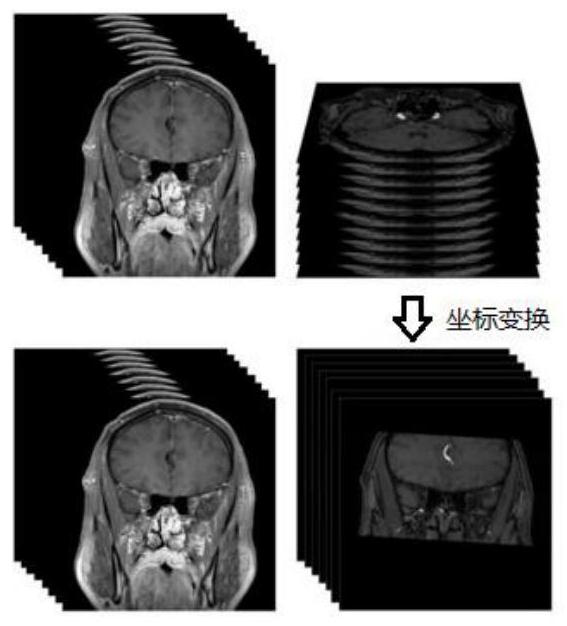Method for establishing intracranial vessel simulation three-dimensional stenosis model based on transfer learning
A technology of intracranial blood vessels and three-dimensional models, which is applied in the field of image processing to achieve the effects of facilitating intuitive observation, improving registration efficiency, and improving registration accuracy
- Summary
- Abstract
- Description
- Claims
- Application Information
AI Technical Summary
Problems solved by technology
Method used
Image
Examples
Embodiment Construction
[0027] In order to obtain the overall state of intracranial blood vessels in a simple, fast and intuitive way. An embodiment of the present invention provides a method for establishing a three-dimensional stenosis model for intracranial blood vessel simulation based on transfer learning.
[0028] Such as figure 1 As shown, a method for establishing a three-dimensional stenosis model for intracranial blood vessel simulation based on transfer learning provided by an embodiment of the present invention may include the following steps:
[0029] S1, acquiring bright blood image group and enhanced black blood image group of intracranial blood vessels;
[0030] Among them, the bright blood image group and the enhanced black blood image group include K bright blood images and K enhanced black blood images respectively; the images in the bright blood image group and the enhanced black blood image group correspond one to one; K is a natural number greater than 2 ;
[0031] The bright...
PUM
 Login to View More
Login to View More Abstract
Description
Claims
Application Information
 Login to View More
Login to View More - R&D
- Intellectual Property
- Life Sciences
- Materials
- Tech Scout
- Unparalleled Data Quality
- Higher Quality Content
- 60% Fewer Hallucinations
Browse by: Latest US Patents, China's latest patents, Technical Efficacy Thesaurus, Application Domain, Technology Topic, Popular Technical Reports.
© 2025 PatSnap. All rights reserved.Legal|Privacy policy|Modern Slavery Act Transparency Statement|Sitemap|About US| Contact US: help@patsnap.com



